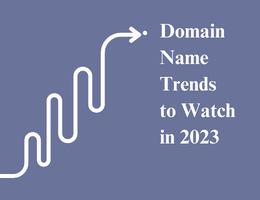
What Is Domain Locking? Can Someone Lock It Without My Approval?
- By admin --
- Thursday, 09 Mar, 2023
It’s great to be secure. Abraham Maslow, the notorious psychologist too realized this very fact, and that’s why he included security within the aggregate of five most introductory requirements of an individual or “ d- requirements. ” Our primary need in any terrain – particular or professional is to feel safe and secure. Achievement of bigger pretensions in life come delicate in the absence of security, and so it has to come first.
culprits are substantially on the commanding edge and they seek new ways to steal- be it your slipup and mortar business or an online business, they master new ways to fraudulently pierce your data and critical information.
So, when you buy sphere name for your website, it's inversely important to insure safety of the same against theft i.e. sphere kidnapping . Cybercriminals can misuse your sphere and cripple your business by
- Stealing business down from you by changing enrollment of your sphere name( s) without your authorization.
- Harming your business character by misrepresenting a sphere name.
- Setting up a shop using a variation of your sphere name or company name.
So how to lock the bad guys out?
Choose a certified domain-name registrar that provides “domain locking”-an enhanced protection for websites.
Types of domain locking
There are two types of domain locks-
1. Theft protection
This feature ensures that your domain name remains safe from illegal domain name transfers
2. Domain master lock
When a cinch is set on a sphere name it prevents –
- Contact details revision,
- Registration and operation of child nameservers,
- Enablement/ disablement of theft protection,
- suspense/ unsuspension of a sphere name,
- Moving pushing transferring a sphere name internally to another client accountetc.
- still, if you want to transfer your sphere, you'll need to unleash it.
In this post we've bandied about alternate type of cinch- sphere master cinch in detail.
What is domain locking?
As per wiki, “ A sphere cinch is a status law that can be set on an internet sphere name by the financing register of the sphere name. This is generally done in order to help unauthorized, unwanted or accidental changes to the sphere name ”.
In simpler terms, sphere locking is a defensive measure by the sphere register for its guests to help them help unauthorized transfer outs to another register or web host and loss of sphere name. sphere cinch status is also called “ customer Transfer Banned ”.
Why is domain locking considered a protective measure?
It's the sphere name that internet uses as an address to connect your guests with your website. Any change in your nameserver will let internet look to the changes and direct guests consequently.
Imagine the consequences( as briefed over), if, this change takes place without your blessing. Scary!
But when the cinch is set on your sphere name, any requests to transfer your sphere to other web hosting company, fails automatically. Your sphere is locked by dereliction.
It prohibits certain conduct like revision, transferring, renewal of sphere and also revision of the sphere contact details during sphere cinch status.
therefore, sphere locking is a defensive measure because it –
- Safeguards your sphere from being transferred virulently.
- Blocks anyone from misdirecting your name waiters.
- Prevents unauthorized changes to the sphere executive information.
- Gives you the peace of mind.
Can someone lock it without my approval?
Yes, your sphere can be locked without your authorization. Registrar can lock client’s sphere, if, there are any formalities pending, any controversies or any complaints registered from the register.
Who can lock /unlock the domain?
The current sphere provider can kill thisfunction.However, you'll have to communicate your current sphere register to get the sphere cinch killed, If you plan to transfer your sphere to another register.
Registrar and client can both enable/ disable theft protection on the separate sphere name, but in the case of a ’ cinch ’, master access lies with the register to disable or enable cinch on a sphere.





